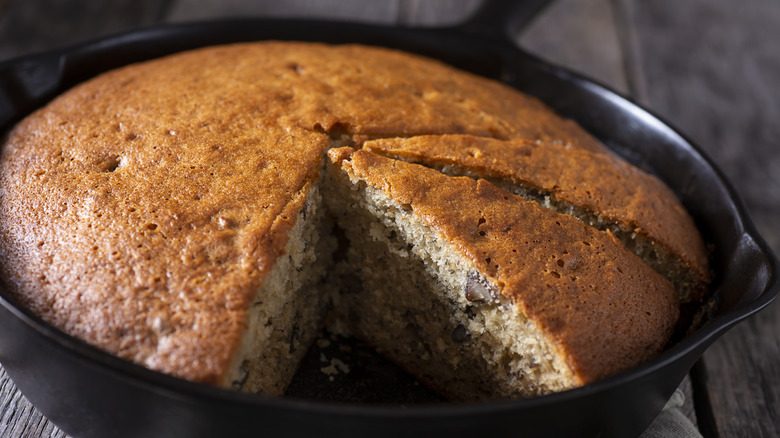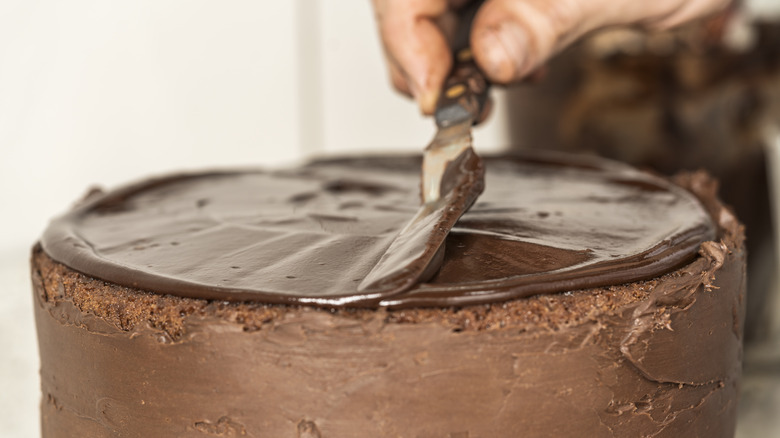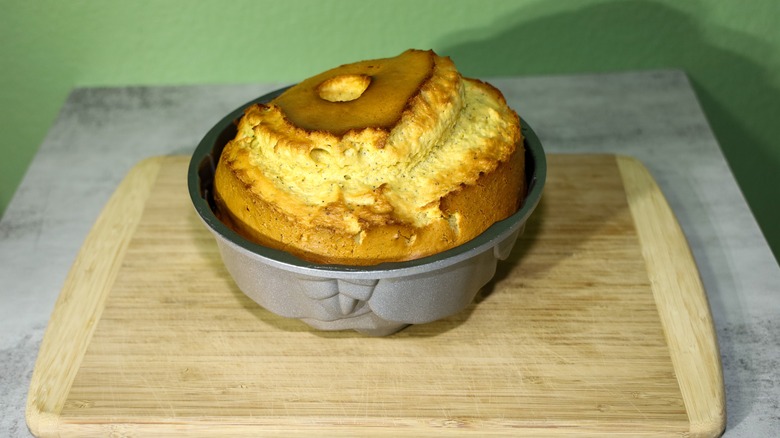What Is A Flower Nail And How Can It Help Your Cake Bakes?
With so many cake recipes out there, you could probably bake a different cake every day for years and never make a repeat. One challenge almost every baker encounters no matter what the recipe, however, is getting cakes to come out with flat tops. Anyone who's made a layer cake knows that if the cakes dome up in the middle when they're in the oven, that it's impossible to stack the layers unless you slice the top off each cake. Single-layer and sheet pan cakes suffer, too — they don't look flat, and you end up wasting cake by cutting away the bumps. There are lots of things you can do to battle the bulge, but one of the easiest cake-making hacks is repurposing a little piece of equipment you might already have if you like to decorate cakes: a flower nail.
If you've never heard of a flower nail, it's a little piece of metal that cake decorators use to make buttercream flowers. It's designed to hold the frosting away from your fingertips while you pipe delicate flower shapes, but you can also use it to keep your cakes nice and flat. All you need to do is place it in the middle of the cake before you bake it.
It's all about heat distribution
If you have trouble getting your cakes to bake flat, it helps to understand why they bubble up (and sometimes later droop) in the middle in the first place. Cakes cook from the outside in, as the heat warms the cake pan and the batter closest to the pan gets hotter first. When a cake bakes, the crumb sets, which is the mass of the cake inside the crust that's made up of cake particles and air pockets. When the outer perimeter sets before the center, there's less space for the batter in the middle to expand and the only place to go is up, which creates the puffy dome.
If you happen to have a flower nail in your baking toolkit, you can place it in the middle of your cake while it's baking to help keep things flat. A flower nail is shaped like a long nail with a broad, flat top, which is designed for holding it by the shaft while creating a frosting flower on the flat face, according to Wilton. Place it face-down in the pan so that the nail pokes up through the cake when you pour the batter in.
The metal will act as a heat conductor and help set the center at the same time as the edges. This will keep the batter from bubbling up, and leave you with a smooth, flat surface.
Turn down the heat
After it cools and you can remove the cake from the pan, remove the flower nail. It will only leave a small hole in the cake, which will be covered by frosting.
If your cake is still puffing up in the center, however, there are a couple of other ways to troubleshoot. First, try turning the heat down by 25 degrees Fahrenheit. Some ovens run a little hot so you may be able to cook more evenly by slowing the action of the leavener with a lower temperature. You should also always have a thermometer inside your oven to make sure it's calibrated so that you're always hitting the right temperatures. The other thing you can do to make sure your cake doesn't dome is to use cake strips, either store-bought or DIY. Basically these are fabric strips that you dampen with water and affix around the outside of the pan. The moisture will cause the pan to heat more slowly, which allows the cake to bake more evenly.
Between these three methods, you should have no trouble getting a flat-topped cake. But if you're ever stuck with a puffy top, there's no shame in slicing it off with a serrated knife to make everything flat. That extra piece that's cut away makes a great snack while you're waiting for the cake to cool enough to frost.


